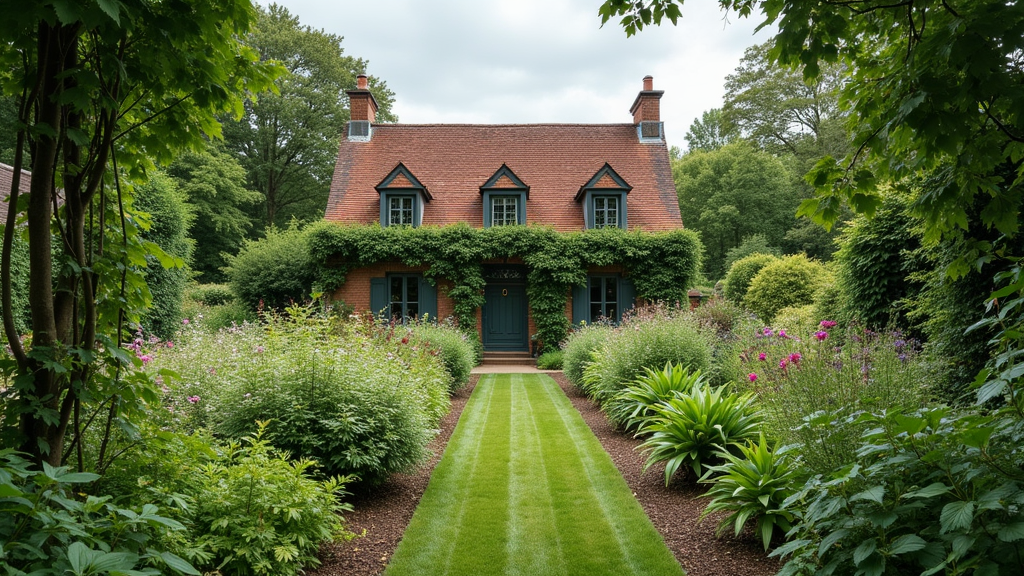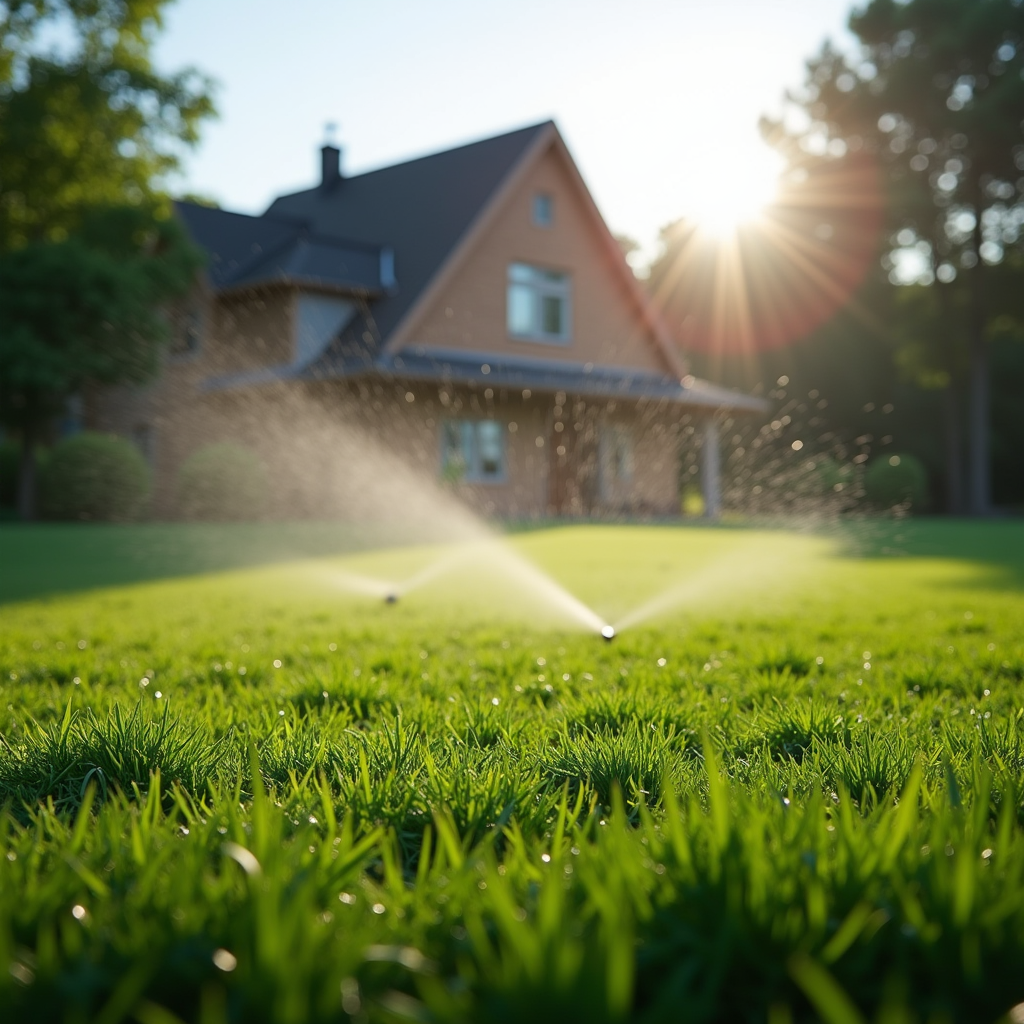Introduction
Gardening is more than just planting seeds and hoping for the best; it's an intricate dance between nature and design. One of the most crucial yet often overlooked aspects of this artistic endeavor is microclimates. These small-scale climatic variations can significantly affect how plants grow, thrive, or struggle in your garden. In this article, we will delve deep into the concept of microclimates and their integral role in landscape design. By understanding microclimates, you can create a lush, vibrant garden tailored to your specific environment.
Understanding Microclimates When Designing Your Ideal Garden
Microclimates are localized areas within a broader climate zone that experience different weather patterns due to various factors like topography, vegetation, and human-made structures. For instance, a garden situated near a building may retain more heat than an open area further away. This phenomenon affects everything from soil moisture levels to plant hardiness zones.
Why Microclimates Matter
When designing landscapes, acknowledging microclimates is essential for several reasons:
Plant Selection: Different plants have varying requirements for sunlight, water, and temperature. Knowing your microclimate allows you to choose species that will thrive.
Water Management: Areas that receive more shade might require less frequent watering compared to sun-drenched spots.
Design Aesthetics: Utilizing the unique characteristics of microclimates can enhance the beauty of your space.
The Science Behind Microclimates
Microclimates arise from various environmental influences such as:
Elevation Changes: Higher elevations tend to be cooler; conversely, lower areas may trap heat.
Proximity to Water Sources: Areas near ponds or streams often have higher humidity levels.
Wind Patterns: Structures can create windbreaks that shield certain parts of your garden.
Soil Types: Different soil compositions can absorb moisture differently, affecting local humidity levels.
Vegetation Density: Trees provide shade and alter temperatures beneath them.
By understanding these factors, you can design better landscapes that cater to these unique conditions.
Identifying Microclimates in Your Garden
How to Analyze Your Space
When embarking on the journey of landscape design, it’s vital first to assess your plot's specifics:
Observe Sunlight Patterns:- Note which areas receive full sun all day versus those that are shaded.
- Identify windy zones and sheltered spots in your garden layout.
- Check moisture retention by digging small holes around different sections.
- Utilize thermometers at various locations throughout the day.
Creating a Microclimate Map
Once you've gathered observational data, sketch out a rough map marking different zones based on their https://www.ramirezlandl.com/about unique characteristics—sunny spots, shady areas, humid pockets—this will serve as a valuable tool when planning your garden layout.

Designing Landscapes with Microclimate Considerations
Choosing the Right Plants for Each Zone
For successful gardening within microclimates:
Full Sun Areas:- Ideal choices include lavender, succulents, and many vegetables like tomatoes.
- Consider ferns or hostas as they thrive with less direct sunlight.
- Opt for moisture-loving plants such as astilbe or marsh marigold.
- Use hardy perennials like coneflowers that can withstand gusts while providing visual appeal.
Utilizing Structures for Enhanced Microclimates
Incorporating trellises or fences not only adds aesthetic value but also plays a significant role in shaping microclimates:
- A trellis can support climbing plants while providing shade beneath. Fences block wind and create warmer environments on their leeward sides.
Factors Influencing Microclimate Design Choices
1. Terrain and Topography
The lay of the land significantly impacts temperature gradients and light exposure:
- Steep slopes may drain quickly but offer good sun exposure. Flat areas might retain water but could face challenges with drainage.
2. Water Sources
Nearby lakes or ponds help maintain humidity but also attract wildlife—consider how this might affect plant selection and maintenance strategies.
3. Urban Elements
In urban settings, buildings influence airflow and heat retention—think about how this interacts with plant life in your overall landscape design strategy.
Maximizing Benefits of Microclimate Design in Your Garden
Creating Comfortable Outdoor Spaces
When designing landscapes around microclimates:
Incorporate seating areas in shaded zones where people can relax without overheating during summer months.
Use reflective surfaces strategically for warmth during colder seasons while maintaining cooling effects in hotter weather.
Seasonal Adjustments
Microclimate considerations should extend beyond initial design:
Rotate seasonal crops based on changing weather conditions; some plants may flourish during specific times while others may falter under similar circumstances later in the year.

Be prepared to adjust irrigation schedules based on localized rainfall patterns observed over time!
FAQ Section
1. What is a microclimate?
A microclimate refers to a small area with distinct climatic conditions differing from its surrounding environment due to natural or man-made factors impacting temperature, humidity, wind exposure, etc.
2. How do I identify my microclimate?
You can identify your microclimate by observing sunlight patterns throughout the day, monitoring wind exposure levels at different points in your garden space, examining soil types/conditions across sections of land—and even using thermometers!
3. Can I create my own microbrewery?
Of course! You can influence local climates through landscape features; think about incorporating elements like trees/bushes for shade alongside structures (like fences) preventing strong winds from disrupting delicate plant life!
4. How do I select plants according to my identified microzones?
Review specific light/water requirements & consider hardiness zones before purchasing any new plants! Match each new arrival's needs against those mapped out previously—ensuring compatibility within each section designed accordingly!
5. Should I change my gardening techniques based on seasonal shifts?
Absolutely! Seasonal changes bring shifts in growth patterns & environmental factors affecting water uptake/nutrient availability among other things—so be sure to adjust care methods accordingly through rotation schedules—and always monitor conditions closely!
6. What resources are available for understanding landscape design better?
Many books/articles focus on sustainable gardening practices & effective landscape designs utilizing concepts like permaculture principles! Online forums/groups provide excellent platforms too where experienced gardeners share insights/advice freely!
Conclusion
In summary, understanding microclimates when designing your ideal garden isn't just beneficial; it's essential if you want thriving flora amidst varying environmental conditions! By taking time upfront investigating local features influencing climate-friendly decisions—even potentially altering future layouts—you’ll cultivate lush landscapes ready bloom beautifully year-round! So grab those gardening gloves & start exploring how these little pockets make big differences—they truly transform ordinary spaces into extraordinary oases inviting life back home again!